#this azalea is native to japan
Text

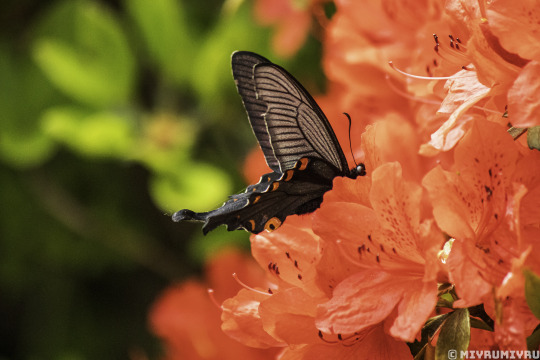

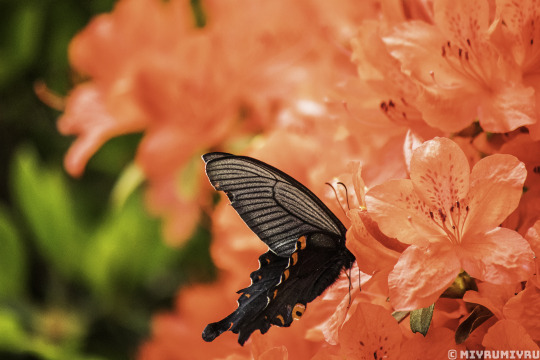
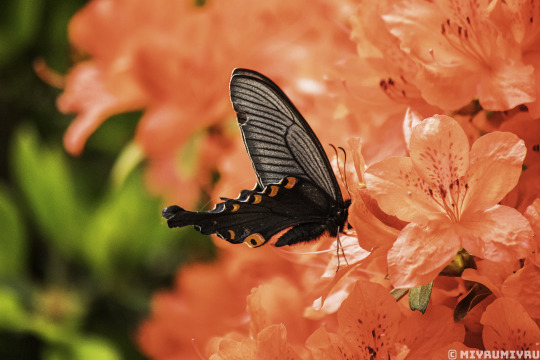
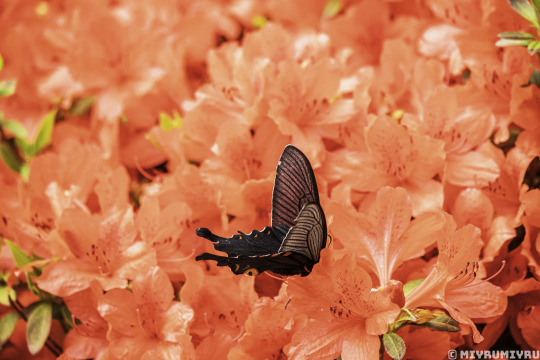
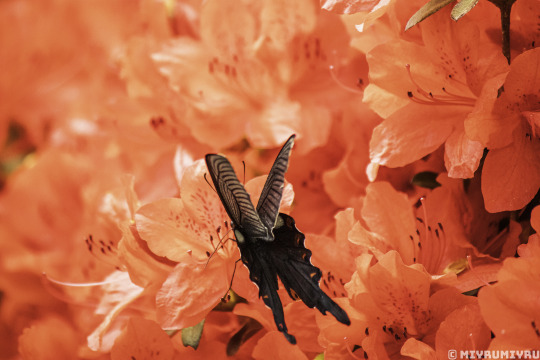

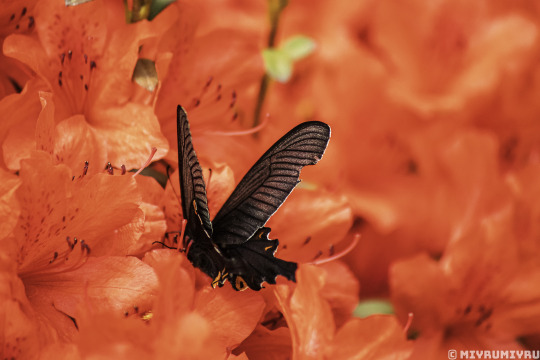

Black butterfly, Red flowers🖤❤️
Love their orange half moon shaped spots so much (♡ㅅ♡)
(M) Long tail spangle - Spring adults (Papilio macilentus)
영산홍 (Rhododendron indicum)
#photographers on tumblr#my photography#original photographers#lensblr#photography#insect photography#wildlife photography#macro photography#nature photography#nature#naturecore#insect#butterfly#swallowtail butterfly#papilionidae#bugblr#entomology#flower#flower photography#red azalea#red moodboard#black angel#so precious#this azalea is native to japan#april 22 2024#noai#no ai#no to generative ai
180 notes
·
View notes
Text
October 24th, 2023

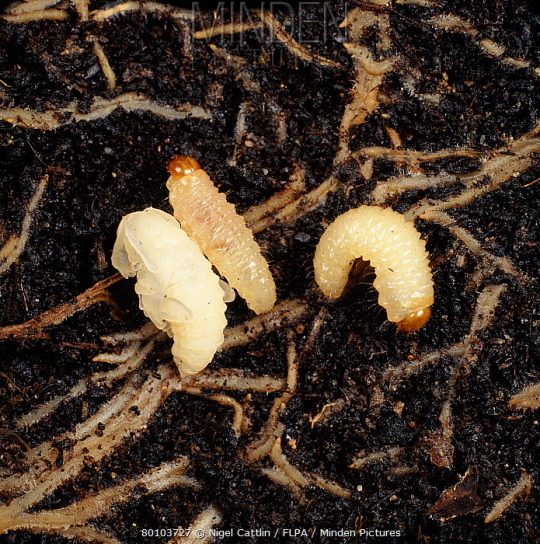
Black Vine Weevil (Otiorhynchus sulcatus)
Class: Insecta
Distribution: Native to Europe; invasive in North America, Japan, New Zealand, Australia and parts of South America.
Habitat: Parks, gardens and conifer nursery beds. Can also be found in greenhouses, as well as inside homes during the colder months.
Diet: Polyphagous, all life stages feed on plants; adults are night feeders that feed on leaves; larvae feed on the roots and crowns of plants, and occasionally on bark. Hosts include many cultivated plants such as azalea, caneberry, rhododendron, euonymus, grape, liquidambar and strawberry.
Description: The black vine weevil is a common garden pest which can cause important damages to cultivates plants, especially those grown within containers with limited space for root growth. Adult feeding is mostly harmless, leaving small notches on the margin of plant leaves, which may be a cause for concern for purely aesthetic reasons. The grubs, however, can cause severe damage to the roots and crown of pants, causing their deaths.
One of the reasons for the black vine weevil's success is its capacity to reproduce asexually by parthenogenesis; the female is able to lay eggs which will hatch even when left unfertilized by a male, resulting in female descendents. For this reason, populations can multiply shockingly fast!
Larvae live primarily in the soil, while adults will emerge from the ground only at night to feed. Both larvae and adults overwinter underground.
(Images by Christopher Adam and Nigel Cattlin)
12 notes
·
View notes
Photo
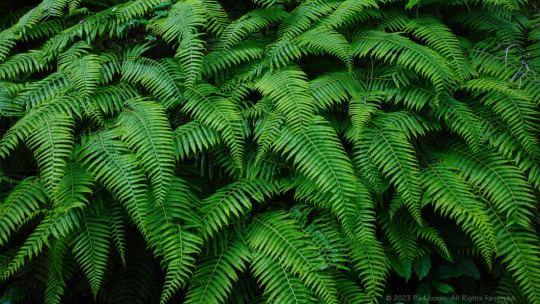
Ferns during Rainy Season
Location: Shimoda Park, Shimoda, Shizuoka Prefecture, Japan
Timestamp: 13:30 June 6, 2023
During the arrival of Commodore Perry's squadron of nine steam-powered U.S. Navy warships, known as the "black ships" (黒船/kurofune), in Shimoda Harbor between 1853 and 1854, an interesting discovery was made. Among the crew members was a botanist who embarked on one of the ships. During their time in Shimoda, the botanist collected an impressive array of plant specimens. In total, they gathered 106 species of plants, 69 species of trees, and 16 species of ferns. Notably, among these were 23 previously unknown species, including fascinating finds like the tachitsubo violet and kaji strawberry.
One particular sight that caught my attention during the Ajisai Matsuri (Hydrangea Festival) in Shimoda Park was the enchanting pattern created by a fern along the pathway. Although my knowledge of botany is limited, I believe this fern could be a Japanese tassel fern (Polystichum polyblepharum, also known as 猪手・inode). This beautiful fern is native to Japan and South Korea, and it thrives in moist, well-drained soil under the dappled shade of evergreen trees.
As you explore the park further, you will encounter a diverse array of plant species. From majestic pine and cedar trees to delicate cherry blossoms, vibrant azalea bushes, and, of course, the numerous hydrangea bushes that give the festival its name. All in all, the park offers a splendid display of natural beauty.
Fujifilm X100V (23 mm) with 5% diffusion filter
ISO 160 for 1/300 sec. at ƒ/2.0
Provia/Standard film simulation
Checkout the Pix4Japan blog for historical references, further details, and geotagged locations. (Link in Bio.)
#スナップ写真#静岡県#下田公園#猪手#イノデ#pix4japan#X100V#Fujifilm#snapshot photography#Japan#Shizuoka#Shimoda Park#ferns
20 notes
·
View notes
Text
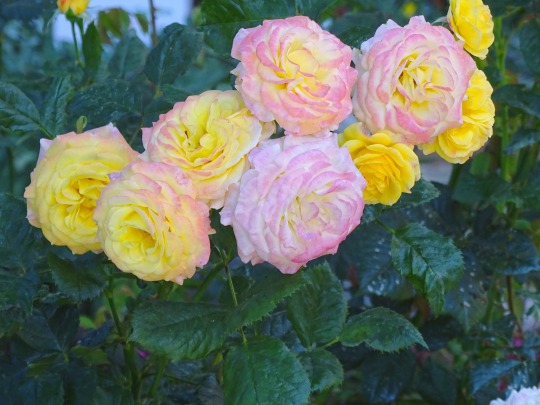


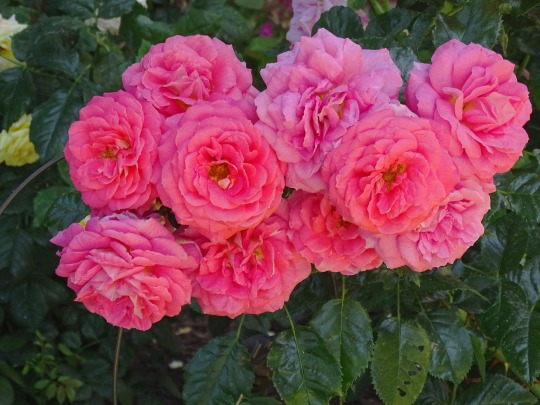
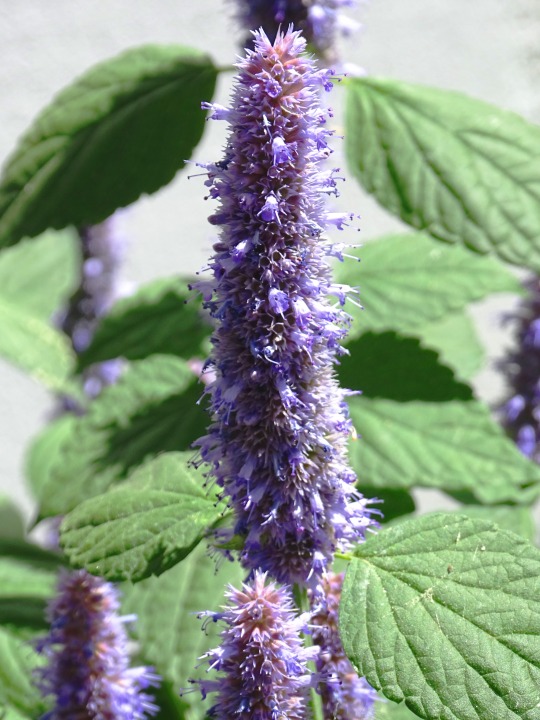
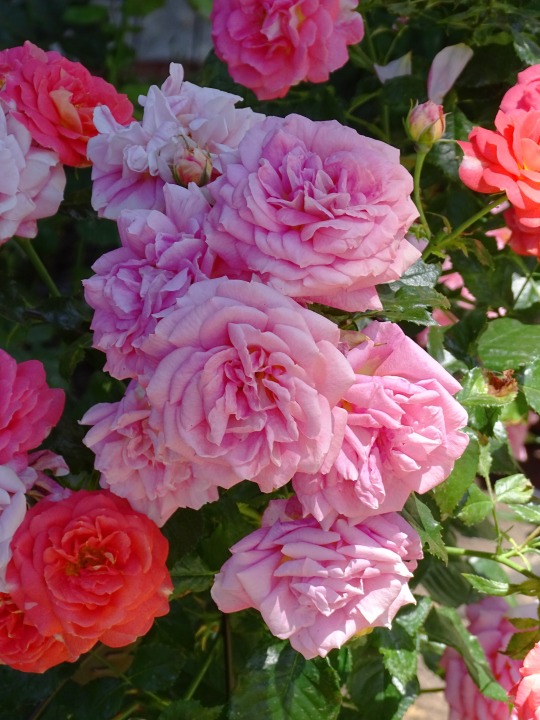
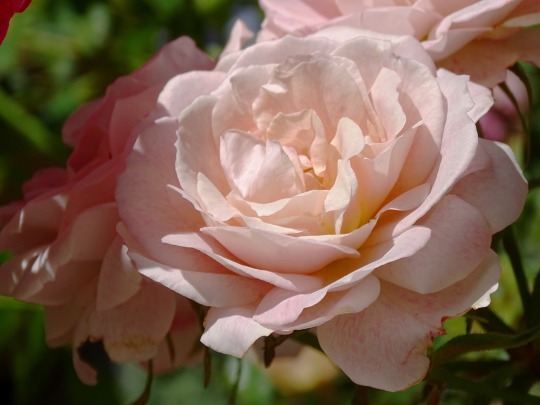
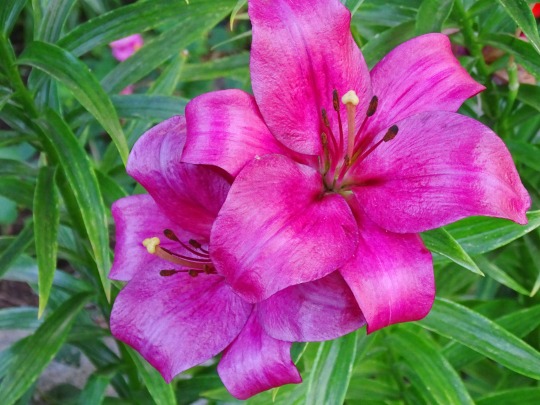


Flora, Vancouver (No. 3)
Many plants and trees growing throughout Vancouver and the Lower Mainland were imported from other parts of the continent and from points across the Pacific. Examples include the monkey puzzle tree, the Japanese maple and various flowering exotics, such as magnolias, azaleas and rhododendrons. Some species imported from harsher climates in Eastern Canada or Europe have grown to immense sizes. The native Douglas maple can also attain a tremendous size. Many of the city's streets are lined with flowering varieties of Japanese cherry trees donated from the 1930s onward by the government of Japan. These flower for several weeks in early spring each year, an occasion celebrated by the Vancouver Cherry Blossom Festival. Other streets are lined with flowering chestnut, horse chestnut and other decorative shade trees.
Source: Wikipedia
#Grenadine Dream#Pacific Giant Summer Skies Larkspur#Anise hyssop#flora#flower#tree#street lamp#travel#original photography#vacation#tourist attraction#landmark#architecture#cityscape#Canada#BC#summer 2023#British Columbia#blooming#rose#Gastown#Burrard Green Streets Garden#nature
4 notes
·
View notes
Text
Introduction to Invasive Plants
We have discussed invasive species in general as well as some invasive plants, and today we will explore invasive plants in more detail. In future articles, we will examine specific examples of invasive plants in Pennsylvania. Four plants are being phased out of nurseries and will no longer be allowed to be planted. Japanese Barberry and burning bush were phased out at the end of 2022. The other species of invasive plants in this series that Pennsylvania has added to a noxious weeds list are flowering pear trees and four species of privets.
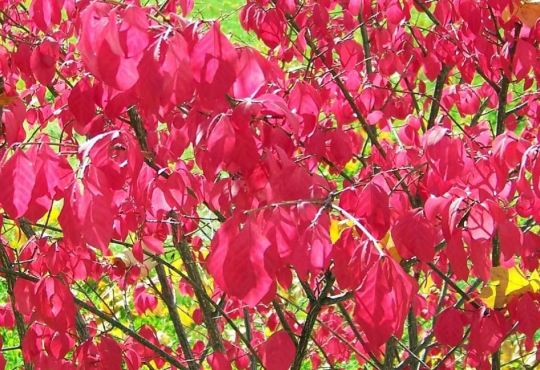
Introducing 4 Invasive Plant Species
Japanese Barberry is a popular ornamental plant used in landscapes across the east coast of the United States. However, as plant health care experts have become more familiar and knowledgeable, the plant has been identified as highly invasive. In addition, the shrub, known for its striking color during fall, is a host for several human diseases, including Lyme disease.
Burning bush is a flowering plant native to China, Japan, and Korea. The plant is famous for its vibrant red foliage during the fall. Burning bush is an invasive species because the plant creates extremely dense thickets and complex root systems, crowding out many native plant species.
Flowering pear trees, such as the Callery Pear, will be another banned plant species in Pennsylvania as of Feb. 10, 2024. Another species popular for its appearance, Callery Pear is similar to Burning bush because the tree proliferates and forms dense thickets, preventing other plants from growing.
Four species of privets, Chinese, European, Japanese, and border privets, can seed into the wild environments and prevent native plants needed by native wildlife and pollinators from growing.
Advantages of Native Plant Species
Native plant species offer advantages over invasive plants in a landscape. One advantage is that native plants are adapted to local soils, climates, and conditions. As a result, native plants will persist through tough climate conditions like frost and drought. Another benefit is that in their environment, native plants require less maintenance, such as water and soil amendments.
Examples of Pennsylvania Native Species
Some examples of native species of plants in Pennsylvania are as follows:
Trees: Eastern Redbud, Dogwood, and Red Maple
Shrubs: Azaleas, New Jersey Tea, and Smooth hydrangea
Perennials: Virginia bluebells, Black-eyed Susan, and Butterfly milkweed
Next month we will discuss the Japanese Barberry in more detail: what the plant looks like, what makes the species invasive, the potential for harm, and control methods and solutions.
Contact Burkholder PHC for Invasive Plant Treatment & Removal
If you are concerned about invasive plants in your landscape or want more information because these plants are affecting your property, contact Burkholder PHC. We provide a free evaluation by our highly experienced, qualified plant health care experts to help remove and control invasive plants and control any adverse effects. Contact Burkholder PHC today for a free consultation.
Blog is originally published at: https://www.burkholderphc.com/introduction-invasive-plants/
It is republished with the permission from the author.
#invasive plants#plant health care services#plant health care#Invasive Plant Species#Advantages of Native Plant Species
0 notes
Text
Discovering Azalea Flower Petal Varieties: Sepals, Petals, and Corolla

Have you ever wondered what makes the azalea flower so beautiful and unique? Well, it's all in the details! Azalea flowers are composed of sepals, petals, and corolla. While each of these parts plays a significant role in the overall structure of the flower, it is the corolla that catches our eye.
Azaleas are native to different parts of Asia, including northern parts such as Japan and China. There are over 10,000 known azalea species with different colors and shapes, making them a popular choice for gardens worldwide.
Understanding the different parts of an azalea flower can help you identify and appreciate its beauty better. Did you know that scientists have even identified a specific gene called AZALEA AP3 that determines petal shape in some species?
So let's dive in!
Importance of Corolla Cultivars in Japanese Azaleas

Japanese azaleas are known for their vibrant and colorful blooms, which make them a popular choice among gardeners. One of the key factors that determine the appearance and appeal of these beautiful flowers is the corolla cultivar.
Corolla Cultivars Play a Crucial Role in Determining the Appearance and Appeal of Japanese Azaleas
The corolla is the part of the flower that contains both sepals and petals. The petals are what give the flower its color and shape, while the sepals protect it during development. Corolla cultivars can vary greatly from one another, resulting in different shapes, sizes, colors, and textures of flowers.
In Japanese azaleas, corolla cultivars play a crucial role in determining the overall appearance and appeal of the plant. The size and shape of each bloom can influence how it looks when arranged with other flowers or used as a focal point in a garden bed.
Different Corolla Cultivars Can Result in Variations in Flower Shape, Size, Color, and Texture
There are many different types of corolla cultivars available for use with Japanese azaleas. Some common examples include:
-
Single: This type has only one row of petals.
-
Double: This type has multiple rows of petals.
-
Hose-in-hose: This type has an additional layer of petals inside each petal.
-
Ruffled: This type has frilly or wavy edges on its petals.
-
Frilled: This type has tightly curled petals.
Each corolla cultivar can result in unique variations in flower shape, size, color, and texture. For example, double blooms tend to be larger than single blooms but may have less defined petal edges. Ruffled blooms have more texture and visual interest than smooth blooms, but may not be as symmetrical.
Breeders Often Focus on Developing New Corolla Cultivars to Create Unique and Attractive Azalea Varieties
Because corolla cultivars are so important in determining the appearance of Japanese azaleas, breeders often focus on developing new cultivars to create unique and attractive varieties. This process can take many years of careful crossbreeding and selection.
In addition to creating new cultivars, breeders also work to improve existing ones. For example, they may try to increase the size or vibrancy of a particular color or enhance the texture of the petals.
Long-Lasting Blooms: Japanese Azalea Varieties

Azaleas are beautiful flowering plants that are popular in gardens and landscapes. They are known for their stunning blooms, which come in a variety of colors and shapes. Azaleas belong to the genus Rhododendron and have different species, cultivars, and varieties.
Flower Longevity
Japanese azaleas are known for their long-lasting blooms that can last for several weeks or even months. Unlike other deciduous azalea species that bloom only once a year, Japanese azaleas produce flowers at different times throughout the growing season. This makes them delightful landscape plants that provide color and interest for an extended period.
Popular Japanese Azalea Varieties
There are many types of Japanese azaleas available, each with its unique characteristics. Some popular varieties include:
-
Kirin: This evergreen azalea has small pinkish-white flowers that bloom in late spring.
-
Gumpo Pink: This evergreen azalea has light pink flowers that bloom in spring.
-
Hino Crimson: This evergreen azalea has bright red flowers that bloom in mid-spring.
-
Coral Bells: This evergreen azalea has coral-pink flowers that bloom in early spring.
These varieties have different bloom colors ranging from pink to red to white. They also have different growth habits, sizes, and foliage characteristics.
Other Rhododendron Species
The genus Rhododendron includes many other species besides Japanese azaleas. Some notable ones include:
-
Japonicum: This evergreen rhododendron is native to Japan and produces large clusters of white or pink flowers in mid-spring.
-
Roseum Elegans: This deciduous rhododendron has pink flowers that bloom in late spring.
-
Zoroi: This evergreen rhododendron has small white flowers that bloom in mid-spring.
These species have different characteristics and are suitable for different growing conditions. However, they all share the same stunning blooms that make them popular landscape plants.
Flower Morphology of Single and Hose-in Varieties of Azaleas
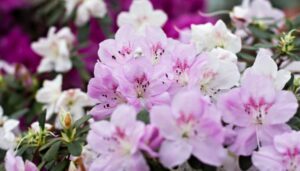
Azaleas are a popular ornamental plant known for their colorful blooms. They come in various types, including single-flowered and hose-in varieties. These two types differ in their flower morphology, which is the study of the physical structure and form of flowers.
Single-flowered azaleas have one row of petals while hose-in varieties have multiple rows arranged like a tube.
Single-flowered azaleas have a simple structure consisting of sepals, petals, stamens, and pistils. The sepals are green leaf-like structures that protect the developing flower bud. The petals are usually broad and brightly colored to attract pollinators such as bees, butterflies, or hummingbirds. In single-flowered azaleas, there is only one row of petals surrounding the reproductive organs.
On the other hand, hose-in varieties have a more complex structure with multiple rows of petals arranged like a tube or funnel shape. The outermost row consists of sepals that protect the developing bud. The next few rows consist of brightly colored petals that attract pollinators to the reproductive organs located at the base of the tube.
The stamens and pistil are also visible in single-flowered varieties while they are hidden inside the tube-like structure in hose-in types.
The stamen is the male reproductive organ consisting of an anther (which produces pollen) and a filament (which supports the anther). In single-flowered azaleas, stamens are visible above or around the pistil (female reproductive organ), making it easier for pollinators to transfer pollen from one flower to another.
However, in hose-in varieties, stamens and pistils are hidden inside the tube-like corolla (collection of petals). Pollinators must push past these petals to access them, which can be challenging for some insects. This mechanism helps ensure that only specialized pollinators such as long-tongued bees can access the reproductive organs, reducing competition for resources.
Both single-flowered and hose-in azaleas come in various colors such as pink, purple, red, orange, yellow, and white.
Azaleas are known for their vibrant colors and are available in a wide range of hues. Single-flowered varieties come in solid or bi-colored petals with shades of pink, purple, red, orange, yellow, or white. Hose-in varieties usually have more uniform colors with fewer color variations.
Pollination Process in Azaleas
Azaleas are beautiful flowering shrubs that come in a variety of colors, shapes, and sizes. They belong to the Rhododendron family and have three main flower petal varieties: sepals, petals, and corolla.
How does pollination occur in azaleas?
Pollination occurs when pollen from the anthers is transferred to the stigma either by wind or pollinators like bees or butterflies. Azalea flowers have both male (stamens) and female (pistil) reproductive organs. The stamens produce pollen grains that are transferred to the pistil's stigma during pollination.
Self-pollination vs. Cross-pollination
Self-pollination can occur within a single flower or between flowers on the same plant while cross-pollination happens between plants through pollinators. Cross-pollination is more common than self-pollination as it leads to genetic diversity in offspring.
Importance of Successful Pollination
Successful pollination leads to the formation of seeds that can be used for propagation. Native azaleas such as deciduous azaleas, mollis azaleas, Ghent azaleas, and Knap Hill azaleas produce seed capsules that contain many small seeds inside them.
Role of Pollinators
Pollinators play a crucial role in the pollination process of azalea flowers. Bees and butterflies are attracted to bright-colored flowers with nectar guides leading them towards the center of the flower where they can collect nectar and transfer pollen from one flower to another.
Factors Affecting Pollen Transfer
Several factors affect pollen transfer during pollination in azalea flowers such as powdery mildew infections which reduce nectar production and make it difficult for bees to land on the flower. High humidity and rain can also reduce pollen transfer as it makes the pollen grains sticky.
Pollination in Other Plants
Pollination is not unique to azaleas but happens in other plants too. Arabidopsis, for example, is a small flowering plant that has been used extensively in genetic research due to its short life cycle and small genome size. The pollination process in Arabidopsis involves the transfer of pollen from the anthers to the stigma following which fertilization occurs leading to seed formation.
Attracting Pollinators: Flower Morphology and Colors

The Role of Floral Morphology in Attracting Pollinators
Azalea flowers have a unique morphology that attracts different types of pollinators. The flower is made up of three parts: sepals, petals, and corolla. Sepals are the outermost part of the flower that protects the developing bud. Petals are the brightly colored part of the flower that attracts pollinators. Corolla refers to all of the petals collectively.
The shape, size, and color of azalea flowers play a significant role in attracting pollinators. For example, bees are attracted to pink, purple, and blue colors while butterflies prefer red, orange, and yellow hues. To attract both types of pollinators to your garden or landscape, it's best to plant azaleas in a variety of colors.
Hose-in varieties have a tube-like structure that provides a landing platform for bees while single-flowered types offer easy access to nectar. This makes them popular among beekeepers who want to attract honeybees to their gardens.
Understanding Flower Colors
Flower color is an important factor in attracting pollinators because it helps them locate nectar sources from a distance. Azaleas come in many different colors including white, pink, red, orange, yellow, and purple.
Red flowers tend to be favored by hummingbirds because they can see this color more vividly than other birds. Butterflies are attracted to bright oranges and yellows as well as shades of pink.
Perianth Development
Perianth development is the process by which flowers develop from floral buds into fully formed blooms with normal flowers containing both sepals and petals.
In some cases, however, flowers may not develop normally resulting in double flowers where stamens have been replaced by additional petals or sepaloid corollas where they resemble sepals rather than petals.
Floral Formulae
Floral formulae are a shorthand way of describing the structure of a flower. It uses symbols to represent the different floral organs and their arrangement within the flower.
Azaleas have a floral formula of K(5) C(5) A(5) G(1), which means they have five sepals, five petals, five stamens, and one pistil. This is a common floral formula for flowering plants in the heath family (Ericaceae).
Flowering Periods
Azaleas typically bloom in the spring but some varieties can also bloom in the summer or fall. The timing of their flowering depends on several factors including temperature, light conditions, and genetics.
To ensure that your azaleas bloom at their peak during the spring season, it's important to plant them in an area with plenty of sunlight and well-draining soil. You should also water them regularly during dry periods to keep them healthy.
Factors Affecting Pollinator Attraction in Azaleas
Azalea flowers are well-known for their striking beauty and come in a range of colors, shapes, and sizes. Azalea flowers have three main parts: sepals, petals, and corolla. The sepals are the outermost part of the flower that protects it during development. The petals are the colorful part of the flower that attracts pollinators. The corolla is located inside the petals and contains the reproductive organs.
Apart from flower morphology and color, other factors influence pollinator attraction to azaleas.
Fragrance and Nectar Production
One important factor is fragrance. Many azalea varieties produce a sweet scent that can attract bees, butterflies, and other insects from far away. This fragrance helps guide pollinators towards the flowers where they can collect nectar or pollen.
Nectar production is another important factor affecting pollinator attraction. Azaleas produce nectar to reward their visitors for helping with pollination. However, weather conditions such as temperature and humidity can affect the availability of nectar or pollen. For example, on hot days when there is little moisture in the air, nectar may evaporate quickly making it harder for pollinators to find food.
Competition from Other Flowering Plants
Competition from other flowering plants can also impact the number of pollinators visiting azaleas. If many other plants are blooming at the same time as azaleas, then there may be fewer bees or butterflies available to visit each flower.
To overcome this competition, some azalea varieties have developed unique adaptations to stand out from other plants. For example, some varieties bloom earlier or later than most other plants in their area so they don't have to compete as much for attention from pollinators.
Conclusion
Understanding the various parts of azalea flowers, including sepals, petals, and corolla, is essential for successful pollination. Corolla cultivars play a significant role in Japanese azaleas, while single and hose-in varieties offer different flower morphologies. Attracting pollinators through flower morphology and colors is crucial for successful pollination in azaleas. Factors such as weather conditions and location can affect pollinator attraction.
To ensure successful pollination in your azalea garden, consider planting a variety of cultivars that offer different flower morphologies and colors to attract a wide range of pollinators. Pay attention to weather conditions and the location of your garden to optimize pollinator attraction.
FAQs
Q: What are some common types of azalea flower petal varieties?
A: Some common types include single blooms with five or more petals, hose-in-hose blooms with multiple layers of petals, and double blooms with many tightly packed petals.
Q: How do I attract pollinators to my azalea garden?
A: Planting a variety of cultivars with different flower morphologies and colors can help attract a wide range of pollinators. Providing a water source and avoiding pesticide use can also help attract pollinators.
Q: Can weather conditions affect pollinator attraction in azaleas?
A: Yes, weather conditions such as temperature and humidity can affect both the number and type of pollinators attracted to your garden.
Q: What is the importance of corolla cultivars in Japanese azaleas?
A: Corolla cultivars play an essential role in determining the shape and size of Japanese azalea flowers. Different corolla shapes can also impact their attractiveness to certain types of pollinators.
Q: How long do Japanese Azaleas typically bloom?
A: Depending on the specific cultivar and environmental conditions, Japanese Azaleas can bloom for several weeks to a few months.
Q: Can I grow azaleas indoors?
A: While it is possible to grow azaleas indoors, they typically require specific growing conditions such as high humidity and bright, indirect sunlight. It's also essential to ensure proper drainage and avoid overwatering.
Q: What are some common pests or diseases that affect azalea plants?
A: Some common pests include lace bugs, spider mites, and caterpillars. Diseases such as root rot and powdery mildew can also impact azalea plants. Proper care and maintenance can help prevent these issues.
Q: How often should I fertilize my azalea plants?
A: It's recommended to fertilize azalea plants once in early spring before new growth appears and again in late spring after blooming has finished. Be sure to use a fertilizer specifically formulated for acid-loving plants like azaleas.
Q: Can I prune my azalea plants? If so, when is the best time to do so?
A: Yes, pruning can help shape your plant and encourage healthy growth. The best time to prune is right after blooming has finished in late spring or early summer. Avoid pruning in the fall or winter as this may remove next year's flower buds.
- Anatomy of Azalea Flower: Facts & Major Species
- Discover Azalea Flower Structure: Facts & Planting Tips
Read the full article
0 notes
Text
Performer
(German Lady POV) by Rei Mangulabnan
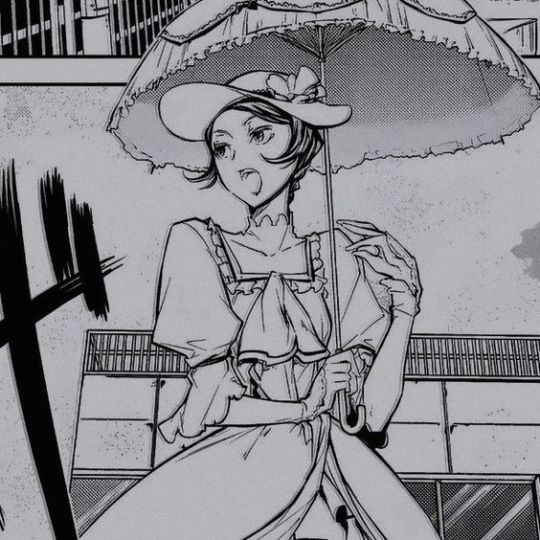

The harsh smell of cigar smoke greeted me as I opened the dining room door. It hung heavy in the air, wrapping the small room in its inescapable smell.
An array of fantastical pictures adorned the walls of the small room. Nightingales on plum trees, illustrations from fairy tales, elaborate paintings of hawks– all created in the traditional Japanese art style. Above the door I spotted what seemed to be a buddhist text, encased in a large frame. I allow my eyes to drink in the sight a moment more. This truly was the land of art I mused to myself.
Seated amidst the exhibition was Watanabe.
I had not seen him in years yet he looked the same as he did the day we parted ways. Save for a few gray hairs and a growing tiredness under his eyes, it was still him.
I removed my long gloves, and extended my right hand out towards him.
Despite fulfilling their purpose of protecting me from the cold, I found that they were often rather restrictive.
He took my hand in his and I stared into his eyes, properly this time. I stared and searched for a glimpse of any old feelings.
Though it terrified me to say it, I did.
“Would you like me to kiss you?” I asked.
“We’re in Japan,” he replied. As if that changed everything. As if that erased all the times we kissed each other in Munich, Berlin or even Vladistovok.
I brushed off his comment with a grin.
Had he no affection left for me? Nothing at all?
“They’ve given us a chambre séparée!” I said excitedly.
“How wonderful is it not?” I glanced over at his direction, hoping for anything. Any sign that the man who loved me was still in there.
Nothing.
“I’m sure it’s quite by chance.” He replied calmly.
“I suppose you’re right,” I replied, smiling and nodding.

I took a seat at the table and looked around once more at the quaint little restaurant still under construction. The bright overhead lights seemed to sear right through my skin, like an accusing spotlight of sorts. The wonderful artworks I had previously been so entranced by appeared to ostracize me now, a foreign lady embellished in Western ornaments.
The basket of flowers on the table seemed to taunt me as well. An assortment of azaleas, rhododendrons, and white yuri, native to Japan.
Many years ago, in that little restaurant above the Blühr Steps, Watanabe had once compared my beauty to that of the white yuri.
He was wrong however. I was a far cry from these Japanese lilies.
I was not meek or chaste or even beautiful in the simple sense.
I appeared more like the azaleas or rhododendrons. Loud, immoral and gaudily dressed.
I didn’t belong here. I was a foreigner, an outsider.
At this point in the dinner the melon served by the waiter had begun to taste bitter. Despite the tension around us, Watanabe continued nonchalantly sipping on his glass of champagne. As if my presence didn’t stir up any sort of feelings within him.
What could he be thinking about perhaps?
I watched him take a few more sips of champagne and pick at the melon the waiter served him a mere moments before.
We had not seen each other in a while, yet he seemed to not care at all.
Had I dreamed up the last few years of our time together perhaps? All those blissful moments in Munich spent by his side? I could’ve sworn they were all real and yet when I look at him now he seems like a complete stranger. Had he met someone new perhaps? A woman befitting his rank as a Japanese government official? A Japanese woman as traditional and conservative as he?
Above all things however, I was a performer. Just as I had a duty to my audience, I had one to fulfill for Watanabe as well.
I would not trouble him with the burden of my emotions.
As dinner dragged on, every word he said sealed his resignation. He made no effort to fight for me.
He raised his glass high above those dreadful flowers.
“Long live Kosinsky!” He exclaimed.
With that admittance of defeat, he had bid adieu to all our fond memories together.
How had he let go of me so easily?
Yet with all the pain searing through my sorry little heart, I forced a smile on my face, silently lifting my glass to join in his surrender.
Through my other hand however, my emotions betrayed me.
0 notes
Text
Top Gardens in Christchurch You Cannot Miss
Christchurch has been named as the garden city owing to the numerous gardens and parks that surround this town. You can explore the city in your campervan rental Christchurch, stopping by at the heritage parks and natural reserves. The colourful gardens that surround this space is dazzling and makes up for unique experiences. If you are in Christchurch, you should not miss exploring these gardens.
1. Hagley Park: this park that is also an open-air recreational area was designed in 1850. It is one of the biggest parks in the town, and comprises of north park and south park. The north park hosts some of the top-notch outdoor events and festivals that call for community attendance. The south park is majorly for walking and exploring. You will find yourself surrounded by many beautiful trees and flowers here.
2. Christchurch Botanic Gardens: This garden in Christchurch is a horticultural student’s paradise. You will find a range of plants, trees and flowers in this region. If you are not studying these plants, you can explore this region to check out some amazing and lesser known plants. You can take your motorhome hire Christchurch around this region. This garden also hosts the central rose garden, which is considered to be the paradise for roses.
3. Riccarton Bush: It is a quiet and peaceful space in Christchurch that houses the kahikatea floodplain forest, which is also native to the Canterbury region. This 600-year-old trees carved from flooding cycles have found a home in this paradise pretty recently. Apart from hosting some of the best known species of plants, trees and herbs, this place is also home to the farmer’s market.
4. Millbrook Reserve: It is located alongside Hagley Park, and is central to Christchurch. Apart from being one of the finest outdoor landscapes, it is also a beautiful place to host weddings and enjoy outdoor photography. You will find a lot of people opting to picnic in this garden. The garden houses azaleas, rhododendrons and camellias during the spring season.
5. Halswell Quarry Park: If you are looking for walking trails, you should visit this park. You have a good parking spot for your campervan rental Christchurch here. It also houses the Kennedy’s bush track, the cashmere hill loop and the Findlay’s walk. There is an extensive picnic area in this region. You will also find the sister city gardens in this location. These gardens have botanic collections from Adelaide, Christchurch, Kurashiki Japan and Seattle.
6. Edmonds Factory Gardens: alongside the iconic baking powder factory lies the most illustrious garden you can find in Christchurch. It is one of the finest designs in terms of outdoor landscapes and garden areas. You will find a lot of horticultural wonders in this space. The gardens are divided into oval gardens and rose gardens. The community of Edmonds factory is responsible for handling and maintaining the gardens.
You can explore the different gardens with your motorhome hire Christchurch. You will find a good parking spot and enjoy a nice picnic inside these beautiful spaces.
0 notes
Text
Srsly, I cannot stress enough the importance of colonizer descendants especially using the land they're able to garden in to support native plants and Not those introduced from Europe and Asia. It forms the baseline of native ecosystems. You plant native flowers, you get native pollinators and native caterpillars and other insects, which gets you native songbirds, which gets you native predators.
115 notes
·
View notes
Text
Thank you😊❤️❤️❤️❤️
Beautiful but toxic flowers
Mistletoe
It’s a tad ironic that the berries famous for Christmas kissing are actually toxic. While mistletoe is unlikely to be lethal, medical attention should still be sought in the event of accidental ingestion, such as a child swallowing some during the holidays. Symptoms of mistletoe poisoning include nausea, blurry vision, and diarrhea.
The ancient Greeks believed that mistletoe had the power to bestow fertility and “give life.” Never mind that if you ingested enough, it’d take yours. Scandinavians considered mistletoe a plant of peace and even declared truces under it.
Note: Mistletoe is a partial parasite.
Oleander
Surprisingly enough, many toxic flowers can be used to treat the very conditions they cause. For example, while oleander can slow your heart down, it is also used to prevent heart failure. Oleander actually treats many conditions, such as epilepsy, asthma, malaria, and even ringworm. Weird, right?
However, if you ingest oleander for nonmedical reasons, you will fall into a bout of stomach pain, rash, disorientation, fainting, irregular heartbeat, and tons of other symptoms. Poisonous substances in oleander include digitoxigenin, neriin, oleandrin, and eleondroside. Nonetheless, despite all these nasty toxins, oleander has been cultivated into more than 300 varieties.
Wisteria
Wisteria is absolutely beautiful. There is no denying that. But there’s no denying its toxicity, either. Originating in China, Korea, and Japan (and introduced to the Eastern US), wisteria can bloom pink, purple, white, or blue flowers that droop from the stem, hanging in clumps.
If eaten, symptoms will include vomiting, diarrhea, abdominal pain, and depression of the central nervous system. While every part of every plant in this genus is poisonous, the seeds are the worst. Wisteria is also extremely toxic to cats and dogs. Be mindful of where you place it.
Angel’s Trumpet
The pendulous flowers of the genus Brugmansia, aka angel’s trumpet, are anything but benign. One bite, and you’ve got painful symptoms such as delirium, hallucinations, diarrhea, vomiting, and pupil problems, among other things like paralysis and even death.
Originally native to South America, all species of these flowers are now considered extinct in the wild. However, the genus lives on through cultivation, and a number of hybrids have even been developed.
Lilies
There are many variations of lily, a number of which are poisonous. Most people are familiar with the “stargazer” lily. Also, there are a lot of flowers with “lily” in their name that aren’t actually classified as lilies, like the daylily, water lily, and calla lily. Although lilies rank fourth in flower popularity globally, very few people actually know just how poisonous they can be. These plants are native to the temperate regions of the Northern Hemisphere, though the Easter lily originated in Japan.
Lilies are generally more toxic to animals, especially cats, than humans, but they can be dangerous. On one extreme, the sap of some flowers can cause skin irritation; on the other, ingestion of some species is potentially fatal. It depends on the type of lily, whether a “fake” or “real” lily. Not all are as poisonous as others.
Foxgloves
The genus Digitalis, otherwise known as foxgloves, originated in Europe and Asia. The plants contain glycosides, digitoxin, and deslanoside, all which harbor bad intentions for your heart. So, don’t eat any of the roughly 20 species of the flower, also known as “Dead Man’s Bells.”
All parts of the plants are toxic, but the leaves on the upper stem will kill you the quickest. Delirium, hallucinations, vomiting, convulsions, tremors, and much more are offered by only one bite of a single leaf.
Azaleas
Azaleas are members of the Rhododendron genus and are toxic, very much so to animals like dogs, cats, and horses. Azaleas contain grayanotoxins, which depress the central nervous system and can put you in a coma, or a coffin, if enough is ingested.
Azaleas are quite popular in the Southern states of the US, especially on plantations. They largely originate in Asia, but there at least 26 species native to North America, too. Note: Azaleas are the national flower of Nepal and are mentioned in ancient Chinese texts, which praise the flower for its beauty.
Belladonna
Atropa belladonna, deadly nightshade, Devil’s cherries, belladonna, or whatever you want to call it, originates from Europe, Southwest Asia, and Northwest Africa and is filled to the brim with toxins. Effects of ingesting the berries they produce include thirst, dryness of mouth, delirium, rash, dilated pupils, and stupor. It can paralyse nerve endings in the involuntary muscles of your body, like your blood vessels, gastrointestinal muscles, or your heart.
Note “Belladonna” means “beautiful lady” in Italian because Italian women used belladonna in eye droppers to dilate their pupils, which they believed produced the look of, well, a beautiful lady.
Lily of the Valley
You wouldn’t expect this dainty, delicate-looking flower to be as toxic as it truly is. This plant contains 38 different types of cardiac glycosides, which affect (surprise, surprise) the heart. Despite causing vomiting, delusions, and blurred vision, the poison is absorbed into the body slowly, so you do have time get treatment before serious damage occurs.
You may also experience severe headache, nausea, slow heart rate, and excessive urination. However, if you don’t live in Northern Europe or in America, you don’t have to worry about this, because Convallaria majalis (so this is one of those lilies that aren’t lilies) likes the cool, temperate regions of the Northern Hemisphere.
Poison and water Hemlock
The lacy, deadly poison hemlock (pictured above) happens to hail from Europe and Africa, though it has been introduced to North America, Asia, and Australia. Can’t say “nice to meet you,” though, as even small ingestions of this plant can kill you swiftly. Poison hemlock can cause respiratory collapse to and ultimately death.
Water hemlock is even more dangerous than poison hemlock. Actually, water hemlock has the revered title of being the most toxic plant that grows in North America. It will bestow grand mal seizures upon you before claiming your life. What’s even more rattling is that it’s a relatively common flower; we’ve probably all come across it at some point in time, possibly mistaking it for Queen Anne’s lace.
Note: Poison hemlock is the plant that was used to kill the philosopher Socrates.
19 notes
·
View notes
Text

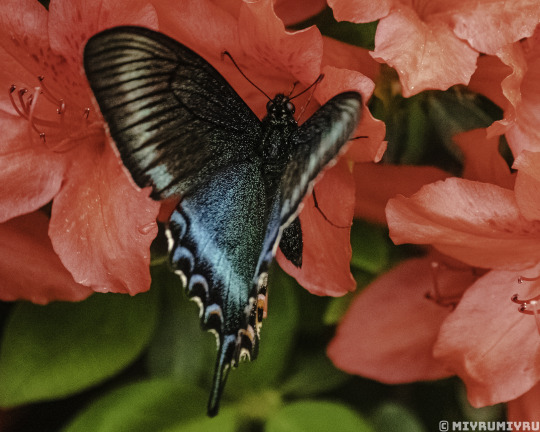

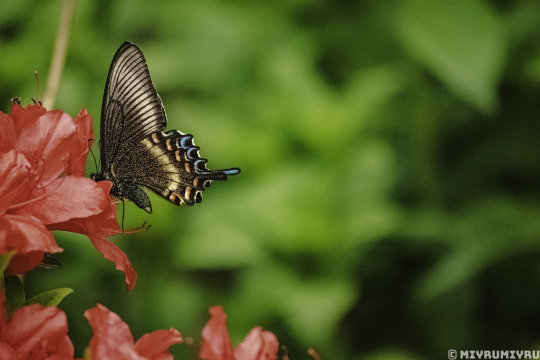
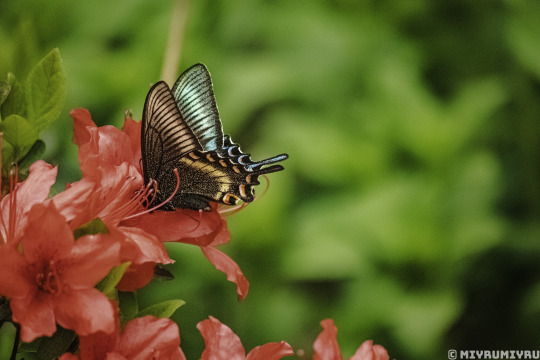

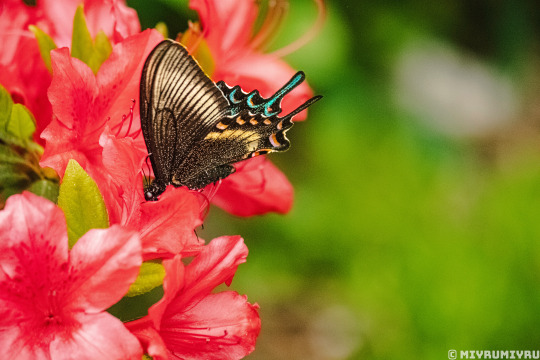
Azure, black, emerald, orange, pink and yellow...
Do you love the color of the butterflies?
(M) Alpine black swallowtail - Spring adults (Papilio maackii)
영산홍 (Rhododendron indicum)
#photographers on tumblr#my photography#original photographers#lensblr#photography#insect photography#wildlife photography#macro photography#nature photography#nature#naturecore#insect#butterfly#swallowtail butterfly#papilionidae#bugblr#entomology#flower#flower photography#colorful#red azalea#black angel#so precious#so colorful#this azalea is native to japan#april 21 2024#noai#no ai#no to generative ai
50 notes
·
View notes
Text
i saw a regional omens thing so... y’all are gonna witness Southern (US) Omens
they’re both racially Native (in appearance or whatever??) aziraphale has not gotten out of wearing bolo ties. also, so much turquoise
aziraphale has the most Propuh Southe’n Accent (example: Steel Magnolias), says “bless their heart” and other (usually condescending) southernisms that are practically dead
aziraphale is very fond of sun hats. and sweet tea instead of cocoa
instead of just wine, they largely drink mint juleps or moonshine
both sides take credit for Waffle House
neither side takes credit for what country music has become (aggressively nationalist)
crowley is responsible for the entirety of atlanta and its metro area roads being Like That
crowley is the reason for all the “ghostly activity” stemming at least from savannah because he used to pretend to be a ghost to fuck with people. now it’s An Industry there because he did it maybe a little too much. he HATES tourists, but has no one to blame but himself
crowley owns a billion belt buckles, esp novelty ones, no matter how much his fashion changes
crowley just fucks with church signs 99% of his day
[something something Memphis and Elvis]
aziraphale was CRUSHED when he found out paula dean was Like That, as that’s the food of his LIFE
crowley stans dolly parton
ALL music left in a car becomes lynyrd skynyrd (unless it’s dolly and also the one rascal flats song)
crowley’s garden is full of hydrangeas and azaleas and magnolias.
likewise, crowley is responsible for the kudzu outbreak (but it was a mistake because he was trying to impress aziraphale bc aziraphale loves japan)
they both love o brother where art thou
crowley has an antique truck that’s in fucking mint but also is 4x4 and has the power and capacity of a 4 door Chevy. it has the dukes of hazard horn
crowley invented the “sell your soul to the devil for your music” concept but it was mostly just dramatics
they both do, in fact, have favorite SEC teams, despite know jack shit about the sport. it’s just something to pettily argue about
19 notes
·
View notes
Text
Introducing: Bonsai Bittys! (Free to Adopt)
These bittys are the dryads or spirits that inhabit Bonsai (dwarf) trees. Bonsai is an art form that has been practiced in Asia for over a thousand years and has been adapted to trees and plants originating from outside or Asia such as the Americas. With proper care, Bonsai’s can live for decades or even hundreds of years so having a plan of inheritance for your Bonsai is important! Some caretakers have even donated their Bonsais to botanical gardens, senior centres or hospitals! The spirit of the tree, your Bitty Bonsai, will only remain active as long as they have a special bond with a caretaker. If no special bond exists they “sleep” within their trees until a new bond is formed. A Bitty Bonsai can’t be away from their trees for long periods of time, after 48 hours they start to feel weak and eventually fade away completely by the 72 hour mark - returning to their tree. However, they don’t suffer any lasting harm and just require another 72 hours of “sleep” in their trees before they reappear – completely refreshed!
Appearance: Humanoid-skeletal figures make of dark wood and black wood grain, despite the wood of the tree they come from. They have 3 fingers and a thumb and dark holes with tiny lights where their eyes would be. They have only a point at their nose and no mouths. They communicate with sweeping movements and dances that somehow anyone who watches can understand, but they prefer to be poetic rather than clear. They are completely hairless but often have leaves, flowers or branches matching their trees decorating their heads. They enjoy wearing clothes but they always leave their hands/feet uncovered. Some bittys prefer wearing masks over their faces to give themselves more decoration and colour.
Powers: These bittys can gift small boons to their caretakers/homes that are in accordance with the symbolism of the tree they come from. (For example: A maple tree is seen as a symbol of balance and the turning of the seasons. So a Bonsai Bitty of this type would be able to help their caretaker ground themselves during a panic attack or even just help them meditate more successfully.) They are unconstrained by gravity and may fly but they cannot be far away from their trees for long periods of time.
At this time I am happy to present FIVE kinds of Bonsai bittys! (If they become popular I have a few ideas for more types!)
Cedars: There are many kind of cedar trees that are plentiful all through the temperate regions of Eurasia and the Americas. They are a part of many religions from Shinto in Japan, to the Traditional Ceremonies of Native Americans. The common symbolism of these trees are protection and purification. “Smudge sticks” are made of cedar branches often used in ceremonies to purify themselves before a ritual or ceremony. Shinto priests use cedar branches to purify offerings/themselves for the same reason! A Cedar Bonsai Bitty prides himself on the protection of their caretaker and their home! Impure spirits avoid homes with a Cedar Bitty to search of easier prey, and the air in your home is noticeably cleaner than others - helping people with allergies to dust/dander. Cedars consider themselves “warriors” so they often like to carry weapons and wear armor / warrior masks. Again they are common among many cultures in the world so they are very diverse in their costuming!
Ginkgo: Ginkgo trees are famous for their hardiness; a famous tree in Japan still stands strong today, in spite of being less than a kilometer from Ground Zero in Hiroshima! They are also associated with health (think Ginkgo Bilbao supplements). They have beautiful green fan-shaped leaves that change to gold in the autumn and is considered a “living fossil” – all the other trees in it’s family have gone extinct over the millennia. A Ginkgo Bonsai Bitty likes to consider themself a healer! Their caretaker and their family/roommates under a Ginkgo’s protection can boast being skipped over when the current “plague” makes the rounds. If they do get sick, people with a Ginkgo in their life they often get better faster – or have less severe symptoms. A Ginkgo isn’t a miracle worker, he can’t cure sickness or disease, but he can help you stand up to it! Ginkgo bittys enjoy dressing up as traditional and modern health care professionals. Lots of scrubs, stethoscopes and medicine boxes! They enjoy jewelry, emblems and other decorations made in the shape of the Ginkgo leaf!
Money Tree: Money Trees are a plant from Central/South America and is often sold with a braided trunk with the leaves only appearing at the very top shading the tree - almost like an umbrella. They are a flowering tree and have the largest flowers of any kind of tree! They are called “Money Trees” after a Chinese myth and are therefore associated with wealth. A Money Tree Bonsai Bitty can’t help you win the lottery – but you might find a $20 stuck in a bush. Or find a really good deal on something you were saving up for. These little things add up! Money Tree Bittys prefer to wear the colours red, greed and gold – all colours associated with money! They enjoy jewelry, emblems or prints with coin imagery on them. They also enjoy carrying a group of money trees leaves like a parasol!
Maple: Maple Trees are famous for their beautiful changing foliage during the seasons. There are also different types maples from the slim 5 pointed leaves of the Japanese Maple to the large leaves of the Sugar Maple made famous on the Canadian flag – these trees also produce the sugar needed for maple syrup! Although the Japanese Maple is the traditional bonsai favourite, both trees have been used in bonsai before! Due to how beautiful the trees look in each season the maple tree is associated with balance and the passage of time, living reminders of the circle of life and the turning of the seasons. These peaceful Bittys help their caretakers center themselves and promote mental health. Meditating in the presence of the tree, and Bitty you’ve made a bond with, is always more fulfilling. Often they like to dress themselves as humble monks and gurus – people associated with peace, balance and faith. Although some Maple Bittys that are from the Sugar family enjoy dressing as lumberjacks or in the traditional dress of the Native Americans that populate the North-East of North America! (13 Colonies of the USA, Quebec, Ontario and Maritime Provinces of Canada)
Azalea: This brightly flowering shrub is another favourite of Bonsai artist and caretakers. The flowers of azaleas come in many colours but the most popular are the pink shades; other colours include red, yellow, orange, white or purple! Azaleas are often associated with kindness and femininity. The Victorians also used azaleas to symbolize temperance and was used by the prohibition movement. These gentle Bittys remind us that it always better to be kind and influence those around themselves and their caretakers to choose the route of kindness instead of anger. These Bittys are life savers for those caretakers who are in the service industries or deal with volatile people on a regular basis! While most Bonsai Bittys have no gender preference and wear clothes and costumes of all genders - Azalea bittys prefer to project femininity. long kimonos, sweeping dresses, delicate lace and especially floral print! They usually have a floral arrangement matching their Bonsai on their head delicately arranged to look like a hair ornament; often with beads and ribbon accenting it.
Selkie says: I’ve been working on this idea for a long time and it’s gone through a few redesigns since I decided on this one, which I’m quite happy with! These bittys were originally based on @itsladykit ‘s Atypical Papyrus Forest Spirit that I loved so much I wanted a bitty of it. And what’s a bitty tree after all...? A BONSAI! Then I got lost in learning about types of Bonsai and the different styles... Pretty much any tree/shrub can be made into a Bonsai, it really is an art using living materials! I especially love the fruit trees with a full sized fruit hanging off of it! Google it! So cool!
I’d also like to update this post with art someday. I tried making a few prototypes on my own (Maybe I’ll show you someday...) but unfortunately my artistic ability doesn’t match what I want to convey. It was also hard for me to decide on a distinctive style without being too... stiff. And I’ve totally blown my artist commission budget for a while but I hope there’s enough here for you to get an idea of what a Bonsai Bitty would be like!
#adoptable#Bonsai Bittys#Bonsai Bitty#Cedar Bonsai Bitty#Money Tree Bonsai Bitty#Maple Bonsai Bitty#Gingko Bonsai Bitty#Azalea Bonsai Bitty#bittybones#bitty bones#in progress...?#but ready to adopt!
94 notes
·
View notes
Text
i hate lily of the valley and i hate that Monrovia calls Pieris japonica ‘Lily of the Vallley Shrub’ it’s the worst. You can see the proof of how misleading it is by glancing through the tags of that post about the Gay Goblin shrub. Folks, Lily of the Valley is a spring ephemeral groundcover native to Asia/Europe that spreads by rhizome. Not related to Lilies (bulb plants, most common in cultivation are native to Asia but a lot of plants are called a “lily” when they aren’t a lily at all for example Daylily, Calla Lily, Canna Lily, Water Lily, etc) or Pieris japonica (evergreen shrub native to you guessed it!! Japan).
Lily of the Valley aka Convallaria majalis is actually more closely related to uhhh Asparagus than to either of those. It’s in the Asparagaceae family which is split into so many subfamilies and includes fun and popular plants like Agave (I know right? but look at this image of a flowerstalk not quite opened), Dracaena, Spider Plants! (Chlorophytum), Hostas, Hyacinths, Sansevieria, etc.
“Lily of the Valley Shrub” aka Pieris japonica, more frequently called Andromeda, Japonica, Japanese Pieris, etc is an Ericaceae, so including well-known family members like Rhododendrons/Azaleas and Mountain Laurels, Blueberries and a bunch of other common berries, heathers, etc
46 notes
·
View notes
Text
Anatomy of Azalea Flower: Facts & Major Species
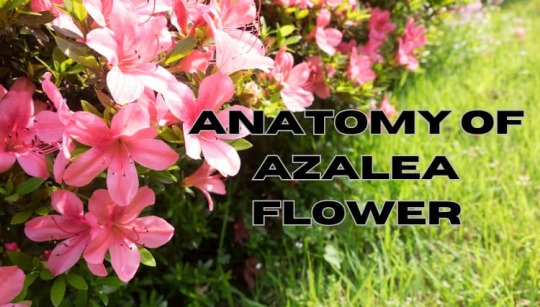
If you're a fan of vibrant and colorful flowers, then you've probably come across the beautiful azalea plant. These flowering shrubs belong to the Rhododendron family and are known for their stunning hues that range from white to pink, red, purple, and even yellow. The azalea flower is a popular choice among gardeners due to its beauty and versatility.
Azaleas typically bloom in spring and summer, making them a perfect addition to any garden during these seasons. They can be grown both indoors and outdoors but require acidic soil with good drainage. Peat moss is often added to the soil as it helps maintain the necessary acidity level.
The anatomy of an azalea flower includes a double hose that emerges from the terminal bud of the plant's stem. The cambium layer inside this hose produces new cells that help the plant grow taller. Azaleas are part of the heath family, which includes other plants such as blueberries and cranberries.
Whether you're interested in planting your azalea garden or simply admiring these stunning flowers at an azalea festival, understanding their anatomy can deepen your appreciation for their beauty. In this article, we'll take a closer look at different aspects of these plants including their seed structure, illustration details, flower types, and more!
Major Species of Azalea Plants
Azaleas are a popular flowering plant known for their vibrant colors and unique shapes. They belong to the family Ericaceae, which includes other plants like blueberries and cranberries. There are two main types of azalea plants: deciduous and evergreen.
Deciduous vs Evergreen Azaleas
Deciduous azaleas shed their leaves in fall while evergreen azaleas retain their leaves all year round. Deciduous azaleas usually have larger flowers than evergreen ones, but they bloom for a shorter period during springtime. On the other hand, evergreen azaleas bloom from late winter to early summer and provide year-round foliage.
Popular Species of Azalea Plants
-
Kurume The Kurume species is native to Japan and is one of the most popular types of azalea plants worldwide. It blooms in early spring with small flowers that come in shades of pink, red, white, or purple.
-
Satsuki is another Japanese species that blooms later than Kurume - from May to June - with larger flowers that come in various colors such as white, pink, red, or purple.
-
Indica Indica species originated from China and India and are commonly found in gardens across the world due to their hardiness and disease resistance. They bloom from late winter until mid-spring with large flowers ranging from white to pink or red.
-
Mollis species are native to Japan but were introduced into Europe in the 1860s where they became a popular garden plant due to their vivid colors including yellow-orange hues not seen in other species.
-
The encore series was developed by Robert Lee at Flowerwood Nursery Inc., Alabama around the 1980s. These evergreen hybrids bloom twice a year - in spring and fall - with large flowers in shades of pink, white, red, or purple.
Anatomy and Structure of an Azalea Flower
Azaleas are beautiful flowering plants that belong to the Rhododendron genus. They produce stunning blooms in various colors, including pink, red, white, and purple. The anatomy of an azalea flower is fascinating and complex.
Petals
An azalea flower consists of five petals that form a funnel-shaped bloom. The petals can be single or double-layered depending on the variety. These petals serve as a protective layer for the reproductive organs inside the flower.
Calyx
The calyx is located at the base of the flower and serves as a support structure for the petals. It is made up of sepals that protect the developing bud before it blooms.
Stamen
The stamen is located at the center of the flower and contains both male (anthers) and female (stigma) reproductive parts. The anthers produce pollen grains that are transferred to other flowers by pollinators such as bees or butterflies. The stigma receives pollen grains from other flowers through pollination.
Ovary
The ovary is located at the base of the flower where fertilization occurs after successful pollination. The fertilized ovules develop into seeds while surrounding tissues become fruit.
Phloem
Phloem tissue in vascular plants transports nutrients produced by photosynthesis from leaves to other parts of the plant body including flowers like azaleas.
Axillary Bud
Axillary buds are present on stems below leaves which grow into branches or flowers when stimulated by environmental factors like light intensity etc., they may also be dormant until triggered by pruning or injury to the main stem.
Stem
Stems provide structural support for leaves, branches, and flowers like azaleas; they also transport water and nutrients between roots & leaves via the xylem tissue.
Vascular Tissue
Vascular tissue in plants includes the xylem and phloem which transport water, nutrients, and hormones between different parts of the plant body. The xylem transports water from roots to leaves while the phloem transports nutrients produced by photosynthesis from leaves to other parts of the plant body including flowers.
Secondary Veins
Secondary veins are present on the upper surface of azalea leaves which provide structural support and nutrient transportation throughout the leaf blade.
Pollen Tube
A pollen tube is a structure formed by germinating pollen grains that grow towards ovules for fertilization. It plays an important role in sexual reproduction in flowering plants like azaleas.
Key Differences Between Rhododendron and Azalea Plants
Rhododendrons and azaleas are both popular flowering plants that belong to the same genus. They share many similarities, including their preferred growing conditions, but there are also some key differences between them.
Leaves
One of the most noticeable differences between rhododendrons and azaleas is the size of their leaves. Rhododendrons have larger leaves than azaleas, which can grow up to 8 inches long. Azalea leaves, on the other hand, are typically smaller and more narrow, growing up to 4 inches long.
Flowers
The most striking difference between these two plants is their flowers. Rhododendrons tend to have clusters of flowers at the end of each stem while azaleas have individual blooms. The flowers of rhododendrons can vary in color from white to pink to red or purple, while azalea blooms come in a wider range of colors such as pink, reds, purples, whites, oranges, and even yellows.
Another difference is that rhododendron flowers usually bloom earlier than those of an Azalea plant.
Size
Rhododendron plants tend to be taller than most varieties of azaleas. While some types of rhodies can grow up to 80 feet tall in the wild (in ideal conditions), domesticated ones generally grow anywhere from 3-20 feet tall depending on species; whereas most varieties of Azaleas only reach heights between 1-6 feet.
Similarities
Both plants require similar soil pH levels (acidic) for optimal growth and prefer partial shade over direct sunlight exposure. They also require well-draining soil with plenty of organic matter.
Tips for Identifying Rhododendron and Azalea Plants
If you're a gardening enthusiast, you may have come across rhododendrons and azaleas. These two plants are often confused with each other due to their similar characteristics. However, there are some key differences between the two that can help you identify them correctly.
Look at the size of the leaves
One of the easiest ways to distinguish between these two plants is by looking at the size of their leaves. Rhododendrons have larger leaves than most varieties of azaleas. Rhododendron leaves can range from 4-14 inches long while azalea leaves are typically smaller, ranging from 1-2 inches in length.
Observe how the flowers are arranged
Another way to tell these plants apart is by looking at how their flowers are arranged. Rhododendrons have clusters of flowers while azaleas have individual blooms. Rhododendron flowers appear in large trusses or clusters, with up to 25 blossoms per cluster, whereas azalea flowers grow singly or in small groups.
Check if the plant is evergreen or deciduous
Rhododendrons are mostly evergreen while azaleas can be either deciduous or evergreen. Evergreen plants retain their foliage throughout all seasons while deciduous plants lose their foliage during winter months. If a plant has green foliage year-round, it's likely a rhododendron.
Genus Rhododendron
Both rhodies and azaleas belong to the same genus called Rhododendron but they differ in terms of leaf size and flower arrangement as mentioned above.
In addition to these tips, some other factors can help you identify rhododendrons and azaleas. For instance, rhododendrons tend to bloom earlier in the spring than azaleas. Rhododendron blooms can start as early as February while azalea blooms typically appear in April or May.
Another factor to consider is the shape of the plant. Rhodies are usually larger and more upright, while azaleas are generally smaller and more spreading.
Both plants come in a wide range of hues including pink, red, white, yellow, and purple. However, some varieties of rhododendrons have bi-colored flowers that feature two different colors on each petal.
Understanding Azalea Root Depth and Growth
Azaleas are beautiful flowering plants that can brighten up any garden. These plants have shallow roots that spread out horizontally rather than vertically, making them unique from other plants.
Anatomy of Azalea Flowers
Before discussing azaleas' root depth and growth, it is important to understand their anatomy. An azalea flower has several parts:
-
Corolla: The corolla is the colorful part of the flower that attracts pollinators.
-
Calyx: The calyx is a protective covering around the base of the corolla.
-
Stamen: The stamen is the male reproductive organ of the flower.
-
Pistil: The pistil is the female reproductive organ of the flower.
Now that we have an understanding of azalea flower anatomy, let's move on to discussing their root depth and growth.
Shallow Root System
Azaleas have a shallow root system that spreads out horizontally just below or above ground level. This means that they do not require deep soil for growth but prefer well-draining soil with organic matter. The shallow roots also make it easier for gardeners to transplant them from one location to another without disrupting their growth.
Planting Azaleas
When planting azaleas, it is essential to keep in mind their shallow root system. Here are some tips for planting these beautiful flowers:
-
Choose a location with well-draining soil rich in organic matter.
-
Dig a hole slightly larger than the size of your plant's container.
-
Place your plant in the hole so that its root ball sits slightly above ground level (also known as "root collar").
-
Fill in the soil around your plant's roots until it reaches ground level.
-
Water thoroughly after planting.
By planting your azaleas with their root collar slightly above ground level, you can prevent waterlogging and root rot. This is because the roots will not be sitting in water, which can cause them to rot and die.
Caring for Azaleas
To ensure that your azaleas thrive, it is important to care for them properly. Here are some tips:
-
Water regularly but do not overwater. Azaleas prefer moist soil but cannot tolerate standing water.
-
Fertilize once a year with an acid-based fertilizer.
-
Prune after flowering to promote new growth.
-
Mulch around the base of your plants to retain moisture and regulate soil temperature.
External Resources for Learning More About Azalea Plant Anatomy
If you're interested in learning more about the anatomy of azalea flowers, there are a variety of external resources available to help you deepen your knowledge. Whether you're a gardener looking to improve your green thumb or simply curious about these beautiful blooms, here are some great places to start:
The American Rhododendron Society
The American Rhododendron Society is an excellent resource for anyone interested in azaleas and rhododendrons. This organization offers a wealth of information on these plants, including detailed descriptions of different varieties, tips on growing and caring for them, and much more.
One particularly useful resource offered by the American Rhododendron Society is its online database of azalea cultivars. This database includes information on hundreds of different types of azaleas, including their size, color, blooming time, and other key characteristics. If you're looking to add an azalea plant to your garden but aren't sure which variety to choose, this database can be an invaluable tool.
The United States National Arboretum
Another excellent resource for learning more about the anatomy of azalea flowers is the United States National Arboretum. This organization maintains an extensive online database of different plant varieties, including many different types of azaleas.
The National Arboretum's database includes detailed descriptions and photos of each plant variety listed. You can use this resource to learn more about the physical characteristics of different types of azaleas - from their leaf shape and size to their flower color and petal arrangement.
Local Gardening Clubs and Nurseries
Finally, don't overlook the value that local gardening clubs and nurseries can offer. These organizations often have members who are experts in growing particular types of plants - including azaleas - and can provide valuable insights into the best ways to care for them.
Many local nurseries carry a wide variety of azalea plants. By visiting these nurseries in person, you can examine the plants up close and get a better sense of their physical characteristics. You may even be able to speak with knowledgeable staff members who can answer any questions you have about these beautiful blooms.
Appreciating the Unique Beauty of Azalea Plants
In conclusion, understanding the anatomy of azalea flowers is crucial in appreciating their unique beauty. By identifying key differences between rhododendron and azalea plants, as well as learning about their root depth and growth, you can better care for these stunning plants. Major species of azalea plants have distinct characteristics that make them stand out in any garden or landscape.
If you're considering adding azaleas to your garden or landscape, here are some FAQs to consider:
FAQ 1: What is the best time to plant azaleas?
The best time to plant azaleas is in the fall or early spring when temperatures are cooler and soil moisture levels are higher.
FAQ 2: How often should I water my azaleas?
Azaleas require consistent moisture but do not like standing water. Watering once a week should be sufficient, but be sure to adjust based on weather conditions.
FAQ 3: How much sunlight do azaleas need?
Most varieties of azaleas prefer partial shade with filtered light. Direct sunlight can cause leaf scorching and damage.
FAQ 4: What type of soil do azaleas prefer?
Azaleas thrive in well-draining acidic soil with a pH level between 4.5 and 6.0.
FAQ 5: How often should I fertilize my azaleas?
Fertilize once a month during the growing season (spring through summer) with an acidic fertilizer specifically formulated for azaleas.
Remember that proper care and attention will ensure that your beautiful azalea plants thrive in your garden or landscape for years to come.
- Discover Azalea Flower Structure: Facts & Planting Tips
- Autumn Ruby Encore Azalea Care
Read the full article
0 notes
Photo

Hi tumblr! Since my most popular post by far was this Read Across the United States map, I felt I should stop acting like the US comprises the entire world and make an equivalent map of wlw books for the countries of the world. This list includes novels, anthologies, and memoirs that take place, and often are written by natives of, countries across the world. And again, I need some help filling in the blanks. Some areas of the world I really struggled with, and others I could see were replete with options, but the only lists I found were in the native language (sorry to say I’m a stereotypical monolingual American).
Afghanistan : Ask, Tell by E.J. Noyes
Argentina : Edge of Glory by Rachel Spangler, The Vintage Book of International Lesbian Fiction by Naomi Holoch and Joan Nestle
Australia : The Flywheel by Erin Gough, Amelia Westlake by Erin Gough, A Story of Now by Emily O’Beirne, Points of Departure by Emily O’Beirne, Here’s The Thing by Emily O’Beirne, The Monkey’s Mask by Dorothy Porter, About A Girl by Joanne Horniman, May Day Mine by Verity Croker, Not-So-Straight Sue by Cheyenne Blue, Clancy of the Undertow by Christopher Currie, The Vintage Book of International Lesbian Fiction by Naomi Holoch and Joan Nestle
Austria : Küss Mich, Libussa by Sophie Strohmeier, Carmilla by J. Sheridan Le Fanu
Bangladesh : Bright Lines by Tanwi Nandini Islam
Belgium : The Princess Deception by Nell Stark, The Vintage Book of International Lesbian Fiction by Naomi Holoch and Joan Nestle
Botswana : Queer Africa: New and Collected Fiction by Karen Martin and Makhosazana Xaba
Brazil : Tempo ao Tempo by Olívia Pilar, Dia de Domingo by Olívia Pilar, Entre Estantes by Olívia Pilar
Canada : Landing by Emma Donoghue, That Inevitable Victorian Thing by E.K. Johnston, The Dirt Chronicles by Kristyn Dunnion, Tomboy Survival Guide by Ivan Coyote, Gravity by Leanne Lieberman, The Young in One Another’s Arms by Jane Rule, After the Fire by Jane Rule, 96 Hours by Georgia Beers, The Vintage Book of International Lesbian Fiction by Naomi Holoch and Joan Nestle
China : When Fox Is A Thousand by Larissa Lai, Seventh Day of the Seventh Moon by Ken Liu, Red Azalea by Anchee Min, The Vintage Book of International Lesbian Fiction by Naomi Holoch and Joan Nestle
Cuba : The Vintage Book of International Lesbian Fiction by Naomi Holoch and Joan Nestle
Cyprus : The Vintage Book of International Lesbian Fiction by Naomi Holoch and Joan Nestle
Democratic Republic of the Congo : Everfair by Nisi Shawl
Denmark : The Vintage Book of International Lesbian Fiction by Naomi Holoch and Joan Nestle
Egypt : A Smokeless Flame by Aziza Amador, A Map of Home by Randa Jarrar, Felucca Dreams by Natalie Debrabandere, The Vintage Book of International Lesbian Fiction by Naomi Holoch and Joan Nestle
England : Another Life Altogether by Elaine Beale, Disobedience by Naomi Alderman, The Paying Guests by Sarah Waters, Tipping the Velvet by Sarah Waters, Affinity by Sarah Waters, The Night Watch by Sarah Waters, Fingersmith by Sarah Waters, Oranges Are Not the Only Fruit by Jeanette Winterson, Why Be Happy When You Could Be Normal by Jeanette Winterson, I Can’t Think Straight by Shamim Sarif, Radio Silence by Alice Oseman, The Dark Victorian series by Elizabeth Watasin, Days of Grace by Catherine Hall, The Daylight Gate by Jeanette Winterson, She Rises by Kate Worsley, The Vintage Book of International Lesbian Fiction by Naomi Holoch and Joan Nestle
Finland : The City of Woven Streets by Emmi Itäranta, Fair Play by Tove Jansson
France : The Last Nude by Ellis Avery, Last Words From Montmartre by Qiu Miaojin, The Vintage Book of International Lesbian Fiction by Naomi Holoch and Joan Nestle
Germany : The Music Box by Elaine Atwell, Aimée & Jaguar: A Love Story, Berlin 1943 by Erica Fischer, Snapshots of a Girl by Beldan Sezen, Paper Love by Jae, The Vintage Book of International Lesbian Fiction by Naomi Holoch and Joan Nestle
Greece : My Best Friend, Maybe by Caela Carter
Hong Kong : Fool for Love by Harper Bliss
India : Love Bi The Way by Bhaavna Arora, Babyji by Abha Dawesar, Kari by Amruta Patil, Falling Into Place by Sheryn Munir, Out! Stories from the New Queer India by Minal Hajratwala, Facing the Mirror: Lesbian Writing from India by Ashwini Sukthankar, The Vintage Book of International Lesbian Fiction by Naomi Holoch and Joan Nestle
Iran : If You Could Be Mine by Sara Farizan, Moon at Nine by Deborah Ellis
Ireland : Hood by Emma Donoghue, Stir-Fry by Emma Donoghue, Fionn: Defence of Ráth Bládhma by Brian O’Sullivan, The Vintage Book of International Lesbian Fiction by Naomi Holoch and Joan Nestle
Israel : A Small Country About to Vanish by Victoria Avilan, The Rosebush Murders by Ruth Shidlo, Israel/Palestine and the Queer International by Sarah Schulman, Dearest Anne by Judith Katzir, The Vintage Book of International Lesbian Fiction by Naomi Holoch and Joan Nestle
Italy : Summer Heat by Harper Bliss, Sword of the Gladiatrix by Faith L. Justice
Jamaica : The Other Side of Paradise by Staceyann Chin, Here Comes the Sun by Nicole Y. Dennis-Benn, Bliss by Fiona Zedde, The Vintage Book of International Lesbian Fiction by Naomi Holoch and Joan Nestle
Japan : The Teahouse Fire by Ellis Avery, A Darkly Beating Heart by Lindsay Smith, My Lesbian Experience with Loneliness by Nagata Kabi
Jordan : I Can’t Think Straight by Shamim Sarif
Kenya : Not Yet Uhuru by Dolar Vasani
Kuwait : A Map of Home by Randa Jarrar
Lebanon : Bareed Mista3jil, The Vintage Book of International Lesbian Fiction by Naomi Holoch and Joan Nestle
Malawi : Not Yet Uhuru by Dolar Vasani
Mexico : The Two Mujeres by Sara Levi Calderon, Desert Blood: The Juarez Murders by Alicia Gaspar De Alba, Sor Juana’s Second Dream by Alicia Gaspar De Alba, 24/7 by Yolanda Wallace, Our Own Private Universe by Robin Talley, The Vintage Book of International Lesbian Fiction by Naomi Holoch and Joan Nestle
Monaco : The Princess and the Prix by Nell Stark
Nigeria : Under the Udala Trees by Chinelo Okparanta
New Zealand : Tahuri by Ngahuia Te Awekotuku, Dare Truth or Promise by Paula Boock, The Shattering by Karen Healey, The Vintage Book of International Lesbian Fiction by Naomi Holoch and Joan Nestle
Norway : The Four Winds by Gerd Brantenberg, The Vintage Book of International Lesbian Fiction by Naomi Holoch and Joan Nestle
Pakistan : Nightingale by Andrea Bramhall
Palestine : Israel/Palestine and the Queer International by Sarah Schulman
Peru : The Copper Egg by Catherine Friend
Philippines : Before the Rain: A Memoir of Love and Revolution by Luisita Lopez Torregrosa, Don’t Tell My Mother by Brigitte Bautista, Women Loving: Stories & A Play by Jhoanna Lynn B. Cruz
Portugal : Seasons of Love by Harper Bliss
Russia : Sophia Parnok: The Life and Work of Russia’s Sappho by Diana Lewis Burgin, Love in Revolution by B.R. Collins, The Revolution of Marina M. by Janet Fitch
Saudi Arabia : The Others by Seba al-Herz
Scotland : Valhalla by Ari Bach, Out of the Blue by Sophie Cameron, Once the Clouds Have Gone by K.E. Payne, Four Steps by Wendy Hudson, The Crazy Jig: Gay and Lesbian Writing from Scotland by Joanne Winning
Slovenia : The Vintage Book of International Lesbian Fiction by Naomi Holoch and Joan Nestle
South Africa : The World Unseen by Shamim Sarif, Black Bull, Ancestors and Me: My Life As a Lesbian Sangoma by Nkunzi Kandile Nkabinde, The Invisible Ghetto: Lesbian and Gay Writing from South Africa by Matthew Krouse, Kaleidoscope Song by Fox Benwell, Porcupine by Jane Bennett, Reclaiming the L-Word: Sappho’s Daughters Out in Africa by Alleyn Diesel, Queer Africa: New and Collected Fiction by Karen Martin and Makhosazana Xaba, Not Yet Uhuru by Dolar Vasani, The Vintage Book of International Lesbian Fiction by Naomi Holoch and Joan Nestle
Spain : The Spanish Pearl by Catherine Friend, The Vintage Book of International Lesbian Fiction by Naomi Holoch and Joan Nestle
Sri Lanka : The Vintage Book of International Lesbian Fiction by Naomi Holoch and Joan Nestle
Syria : Cinnamon by Samar Yazbek
Taiwan : Last Words from Montmartre by Qiu Miaojin
Tanzania : Queer Africa: New and Collected Fiction by Karen Martin and Makhosazana Xaba, Not Yet Uhuru by Dolar Vasani
Thailand : The Windup Girl by Paolo Bacigalupi
Trinidad : The Vintage Book of International Lesbian Fiction by Naomi Holoch and Joan Nestle
Uganda : Queer Africa: New and Collected Fiction by Karen Martin and Makhosazana Xaba, Not Yet Uhuru by Dolar Vasani
United States
Uruguay : The Vintage Book of International Lesbian Fiction by Naomi Holoch and Joan Nestle
US Virgin Islands : Hurricane Child by Kheryn Callender
Wales : Poppy Jenkins by Clare Ashton
Zambia : Not Yet Uhuru by Dolar Vasani,
Zimbabwe : Queer Africa: New and Collected Fiction by Karen Martin and Makhosazana Xaba, Not Yet Uhuru by Dolar Vasani
901 notes
·
View notes